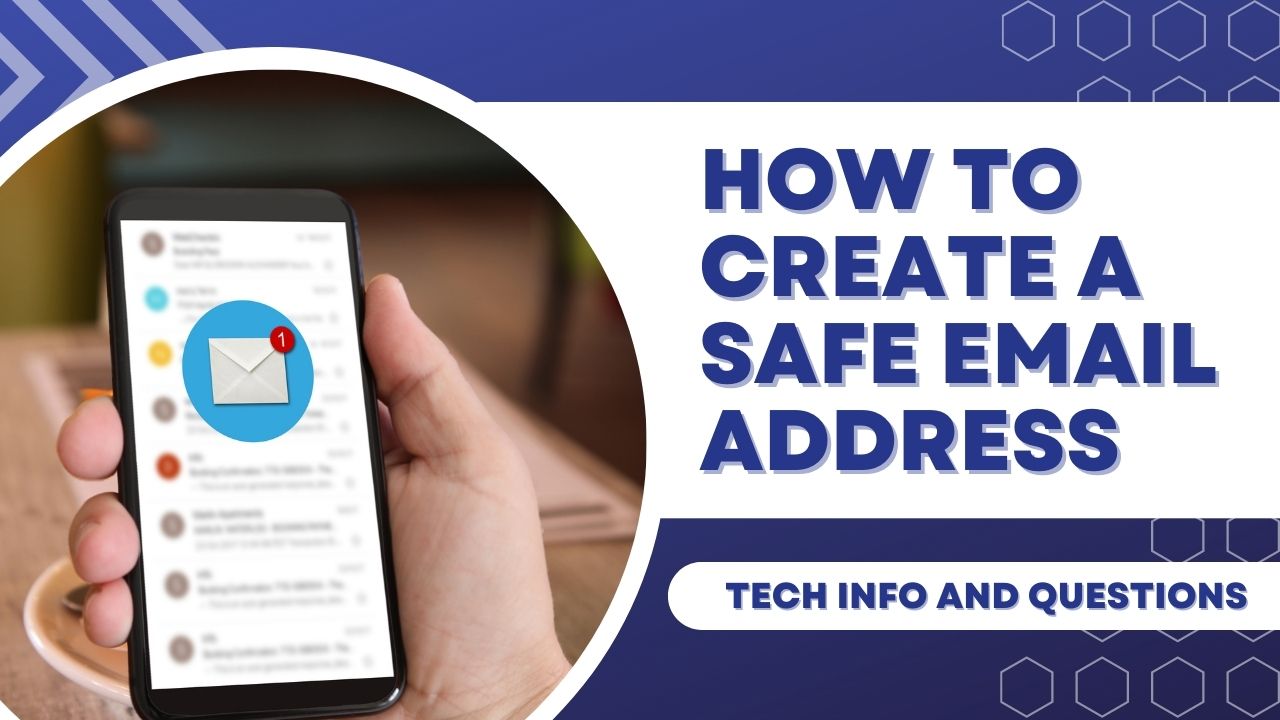 Your email account and the contents of your emails remain secure because of a secure email provider’s features. Usually, providers use end-to-end encryption to accomplish this. End-to-end encryption refers to encrypting an email from a sender to a recipient during the whole transmission process. There is no agreed-upon definition of secure email, thus any provider can claim to be secure. We’ll be breaking down the answers to the age-old question: “How do I create a safe email address? Why do you need to secure your email addresses in the first place?”
Your email account and the contents of your emails remain secure because of a secure email provider’s features. Usually, providers use end-to-end encryption to accomplish this. End-to-end encryption refers to encrypting an email from a sender to a recipient during the whole transmission process. There is no agreed-upon definition of secure email, thus any provider can claim to be secure. We’ll be breaking down the answers to the age-old question: “How do I create a safe email address? Why do you need to secure your email addresses in the first place?”
Why do you need a safe email address?
Let’s take a look at what happens when you send emails from a common service like Gmail to appreciate better why encrypted email is crucial. Gmail does not lack security features. Gmail uses Transport Layer Security (TLS) encryption to encrypt emails sent between your machine and the server.
Google encrypts the data at the network level once it reaches the server. However, Google has access. Unlike before 2017, it no longer reads your emails to serve you adverts. However, Google continues to read your emails in order to offer features like Smart Reply. Additionally, giving access to your emails to outside parties is simple for Gmail and other services.
Your email is currently traveling to its destination after leaving Google’s server. The email will continue to have protection if the recipient’s email service provider employs TLS. Without TLS, it will be easy to unencrypt emails, and therefore be simple to intercept. And even if the email is secure when it is being sent, it might not still be secure when it gets to the email server of the recipient. Certain email service providers don’t even encrypt emails on the server.
What makes a secure email address?
Several essential characteristics that protect the account and the data linked to it from potential attacks define a secure email address. First and foremost, the security of the site depends on a strong password. Strong passwords are difficult to guess because of uppercase, lowercase, numerals, and special characters. Avoiding information that can be easily guessed, such as birthdates or popular words, is essential to fending off brute-force attacks. To avoid potential breaches, it’s also crucial to often update passwords and avoid using the same password for various accounts.
Two-factor authentication (2FA), can also greatly improve email address security. With 2FA, users must provide a second piece of information in addition to their password, such as a one-time code texted to their mobile device. By adding a second step of authentication, you guarantee that non-authorized individuals will still be unable to access the account. Users should also be wary of phishing scams. You can prevent this by always utilizing secure connections (HTTPS) to access your email. It’s also important to exercise caution when clicking on links and attachments because these are frequent entry points for email-based assaults.
How do I create a safe email address?
In order to protect your online communications and personal information, creating a safe email address entails putting many measures into practice. First, pick an email service provider with a good reputation and a track record for having strong privacy and security features. Advanced encryption algorithms are frequently used by well-known services like Gmail, Outlook, or ProtonMail to safeguard your emails from illegal access. Choose a strong and distinctive password when creating your email account. You might also want to think about utilizing a password manager to help you create and securely store complicated passwords.
The safest email providers
1. ProtonMail
The most well-known secure email provider is ProtonMail. It offers end-to-end asymmetric encryption and is open source and is based in Switzerland. If you send fewer than 150 messages daily and don’t require a lot of storage, ProtonMail is free to use. Self-destructing emails are one of ProtonMail’s cool features. When an email reaches its expiration date, the recipient’s inbox gets rid of it. ProtonMail stores your data using zero-access encryption. As a result, ProtonMail itself is passwordless and unable to decrypt your emails. It also prevents them from changing your password. Additionally, ProtonMail provides an iOS and Android mobile app.
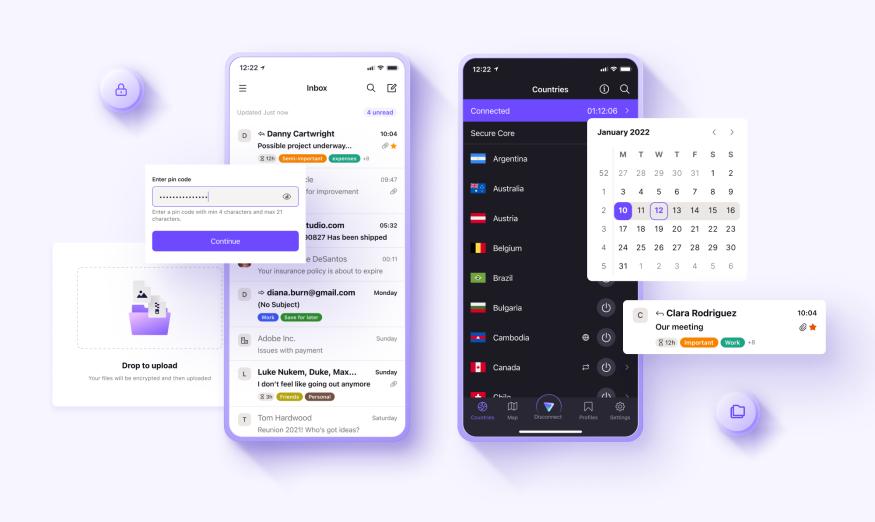
2. Zoho Mail
Anyone can use the free edition of Zoho Mail, but business users value the service greatly. A word processor, spreadsheet program, webinar platform, chat feature, and other collaboration tools are all included in the Workplace package. S/MIME is a type of asymmetric cryptography that encrypts your emails while they are in transit and while they remain on the Zoho servers. Every email includes a unique digital signature of the user. Many users and experts praised Zoho Mail for its usability. You can adjust all of your organization’s mailbox settings from one location using its control panel.
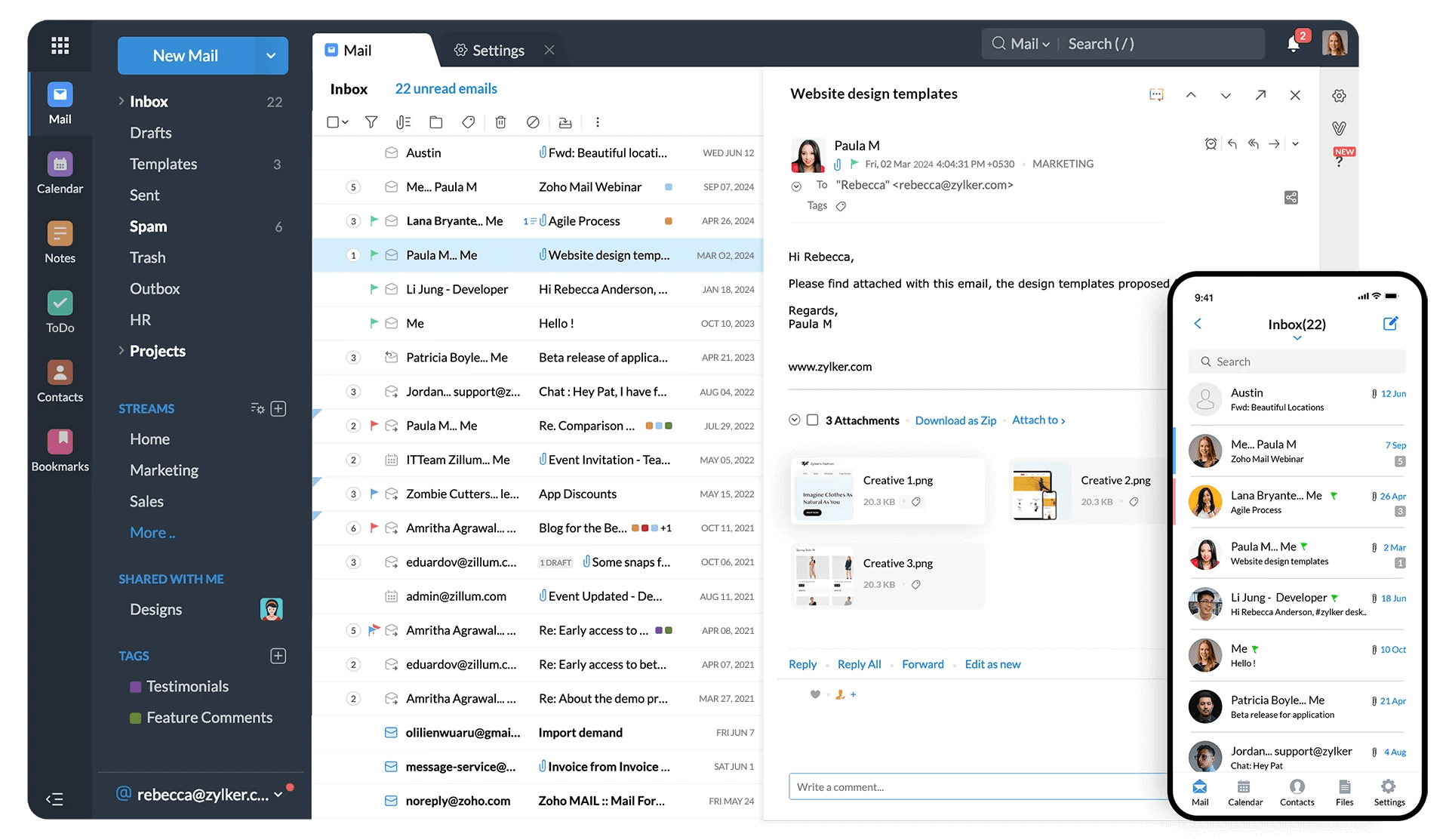
3. CounterMail
CounterMail takes security very seriously. CounterMail utilizes PGP encryption, just like many of the service providers on this list. It also uses the AES and RSA algorithms to strengthen that encryption. Using a USB key set up for two-factor authentication will help you protect your data even more. The servers run by CounterMail in Sweden are unique in that they don’t have hard drives; instead, they boot from a CD-ROM for further protection. CounterMail’s password manager is Safebox. One master password serves as the security for all the usernames and passwords in the Safebox; it is unrecoverable in the event that you forget it. If you already know someone who uses CounterMail, you can sign up for a ten-day free trial.
4. Mailbox.org
Mailbox.org is a great service for corporate users searching for an alternative to Google or Microsoft products. In addition to email, it provides video conferencing, secure cloud storage, an address book, a calendar, and a task list. This email service provider employs PGP encryption, a widely used public-key encryption tool. Mailbox.org is reasonably priced, however, there is no free plan available. You can sign up for the service and pay for it anonymously. Additionally, Mailbox.org takes pleasure in using renewable energy.
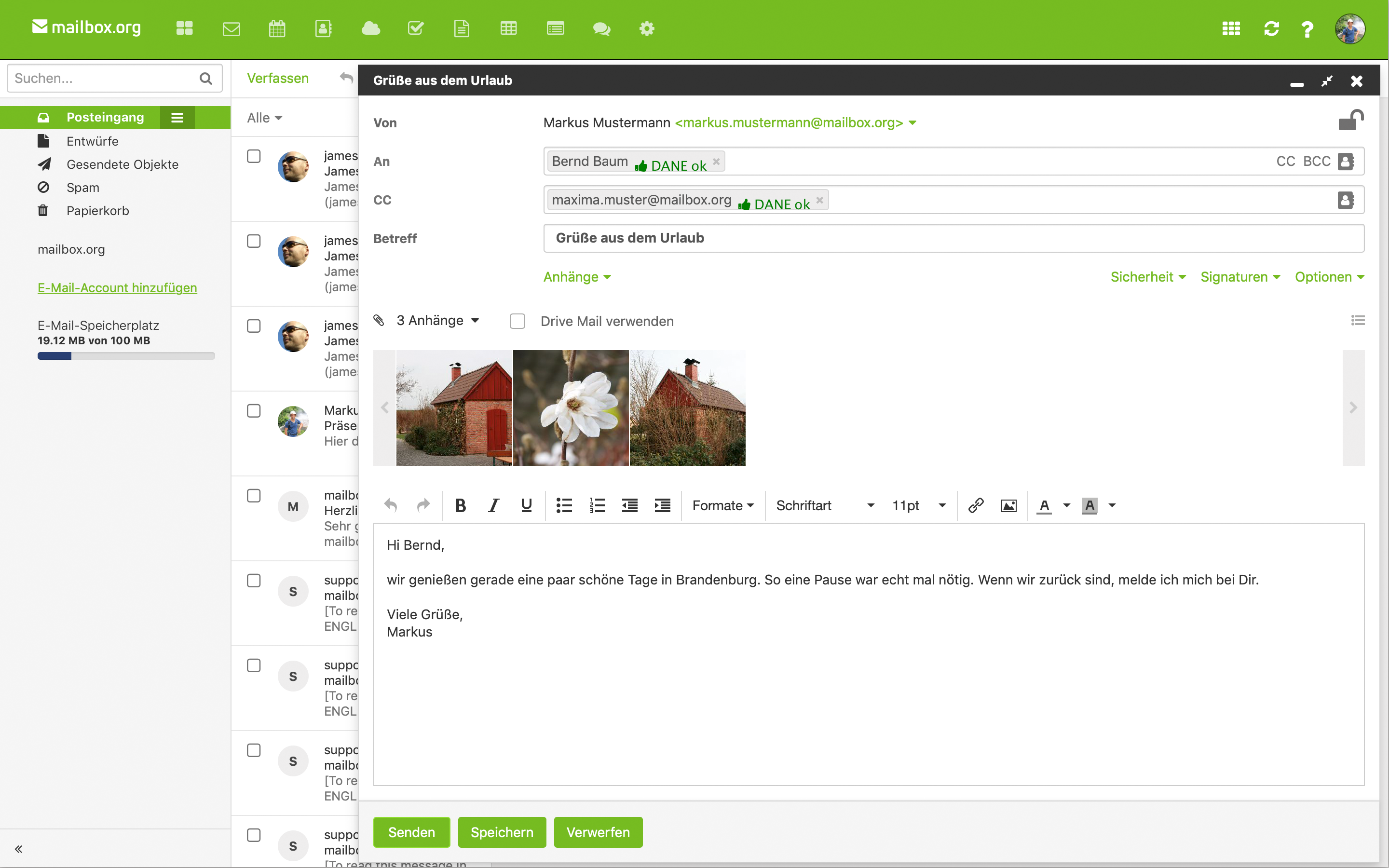
5. HubSpot
The primary selling point of HubSpot is its comprehensive company solution. This includes everything from content management and customer service to email hosting and marketing services. HubSpot’s products offer a ton of different security measures for email. Their features make sure that your data and the data of your customers are safe and secure. You can authenticate mail using SPF, DKIM, DMARC, and the most recent BIMI authentication standards using HubSpot’s marketing email platform.
HubSpot always encrypts your personal data before sending it over the Internet or storing it on your computer. They take extreme security precautions to guard against unintentional or unauthorized access to their network. In addition to keeping your emails safe, HubSpot also safeguards the entire toolkit you use, including its CMS, website builders, and emails.
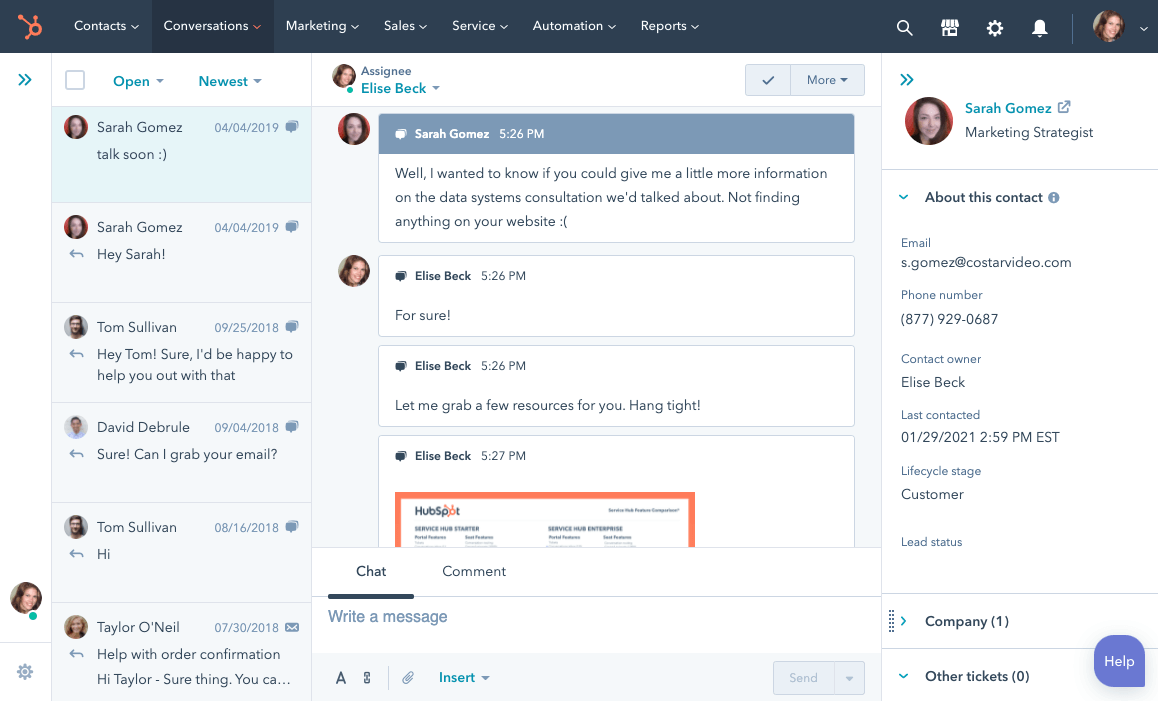
6. PrivateMail
End-to-end OpenPGP encryption is available with PrivateMail, along with other security features like self-destructing emails. With its cloud storage, PrivateMail distinguishes itself from other secure email providers. The AES 256 encryption used in the cloud keeps your data safe. You have the option to locally decrypt or leave your files encrypted while downloading them. End-to-end encryption and secure file sharing are both offered by PrivateMail. The fact that PrivateMail is a US-based service is a drawback in itself. Additionally, it costs more than the majority of the alternatives.

7. Tutanota
Another open-source, two-factor authenticated, end-to-end encrypted email provider is Tutanota. Tutanota takes privacy very seriously. It uses AES and RSA encryption in place of PGP. These solutions use symmetric and asymmetric keys to increase security while using the same algorithms as PGP. Other security features include header stripping, picture blocking, and phishing alerts. You are only given 1 GB of storage and one calendar under the free plan, which is best only for personal use.
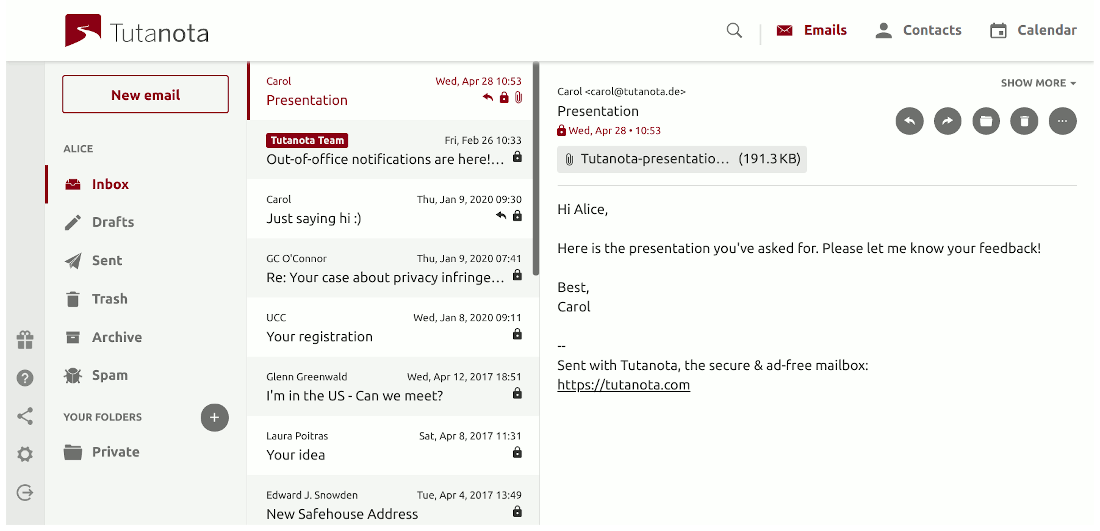
What should we do when it says this email address is taken when you enter your own email while creating an account?
There are a few things you can do if you are establishing an account and getting an error message that says the email address you are trying to use is already taken.
- See if you’ve ever unintentionally opened an account with that email address. If so, try resetting your password and accessing the account by utilizing the “Forgot Password” function.
- You may have attempted to create an account with a different variation of an existing email address.
- If none of the suggestions above work, you might need to get in touch with the service or website’s customer support department for additional help.
How are multiple emails safer?
You can lessen your reliance on a single email account by using numerous email addresses for various purposes. You can minimize the potential harm from a breach if a hacker only compromises one of your email addresses, while the others remain safe. You may, for instance, use a different email account for online shopping and subscriptions than the one you use for work-related emails.
You can recognize phishing attempts more quickly by setting up separate email addresses. You can spot a phishing scam right away if you receive an email purporting to be from a service but going to an email address that isn’t connected to that service. This improves your capacity to defend yourself from falling for phishing schemes and other email-based fraud.
When communicating with several online groups or platforms, it can be easier to retain your privacy and anonymity if you use numerous email addresses. For instance, you can set up a secondary email address just for participating in online forums without giving out your primary address.
However, keeping several email addresses can also be difficult because you have to keep track of and remember each one. You may manage numerous accounts safely by using a password manager. A security issue could result from creating too many email addresses, so take care not to establish too many that you can’t keep track of.
Which email services are reliable in the long term?
Regardless of the service provider you choose, register a unique domain name for them. You may then migrate your domain to a different provider, so it doesn’t matter if a company falters or closes; you won’t need to change every website that uses your email address or inform all of your contacts about your new address.
Here are some of the most reliable and functional email services available today.
- One of Google’s most well-known and commonly utilized email services is Gmail. It has a proven track record of security and dependability.
- Hotmail was the previous name of Microsoft’s email service, which has long offered dependable email service.
- For Apple users, Apple’s email service, which is a member of the iCloud family of services, has typically proved dependable.
- Having been around since the beginning of the internet, Yahoo Mail has kept up a respectable level of dependability.
- ProtonMail is a private email service that has grown in popularity due to its dependability and reputation for putting a strong emphasis on privacy and security.
How to even begin transitioning to a new email address?
Making the transfer to a new email address involves careful preparation and execution to ensure a seamless transition without losing access to accounts or crucial communication. The first step is to create a new email address on the preferred platform, making sure it is professional and simple to remember. Next, let those who need to know—friends, family, work colleagues, and crucial service providers—know about the upcoming change.
Setting an auto-reply on the old email to inform subscribers of the new address and its activation date is a good idea. As the changeover gets underway, update online accounts, subscriptions, and social media profiles with the new email address. Additionally, temporarily forward emails from the old address to the new one to catch any lingering recipients.
Deactivate the old email address after a fair amount of time to prevent confusion. Before permanently canceling the previous account, don’t forget to back up any crucial emails and contacts. A coordinated strategy will make the switch to the new email address easier and more smooth.
Conclusion: How do I create a safe email address?
In conclusion, setting up a secure email address is essential for protecting your online identity and sensitive data. You may dramatically lower the risk of unauthorized access and potential identity theft by following best practices. This includes using a strong password, enabling two-factor authentication, and avoiding including personal information in the address.
The security of your communications is further improved by selecting a reliable email service provider. They have to place a high priority on security and encryption. A well-protected email account also benefits from being attentive against phishing efforts, routinely checking account activity, and maintaining current recovery alternatives.






